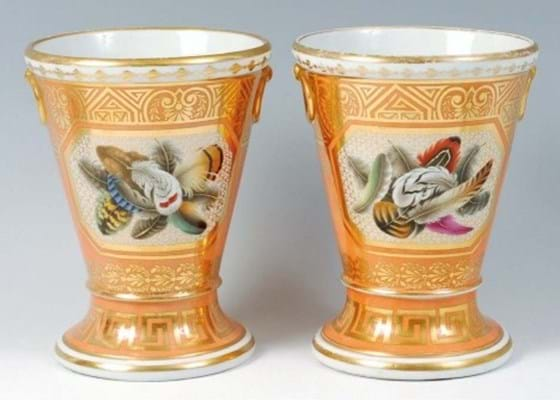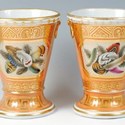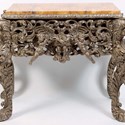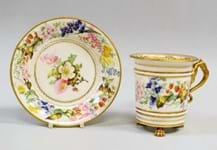It was the vendor’s belief that it had been a gift from Louis XVI to Marie Antoinette and had stood in the Boudoir de la Reine, the so-called Silver Room, of the Château de Fontainebleau.
Later, the story went, it had been given to a servant before the contents were sold by Revolutionaries.
It was an alluring tale – recorded in the catalogue ‘by repute’ – but did it fit with the piece?
The 3ft 3in (1m) wide table with a carved frieze of cherubs, a bird of prey and flowers came with a later marble top – a clue perhaps to its original purpose as a stand for a cabinet.
Such stands (typically English and attributed to the Charles II or early William and Mary period) were often made to display exotic lacquer cabinets imported at great expense via the Silk Road.
It sold over the phone to a European buyer at £21,000.
Auctioneer Edward Crichton described another lot as “a genuine sleeper”.
The pair of English porcelain vases c.1805-10, illustrated on this page, were catalogued as ‘possibly Chamberlain’s Worcester’.
One of the 6in (15cm) tall vases had been restored to the base, the other had a small chip to the rim but the enamels and glaze were good.
Against a £120-180 estimate, the pair sold to the London trade at £4800. “I was staggered by the price,” said Crichton.
A humbler piece of English ceramics also went well above hopes.
A 14in (35cm) late 18th century slipware baking dish with a trailed rectangular decoration was the second good example offered in the regions in recent weeks (see Mitchells’ sale report, ATG 2309).
The 14in (35.5cm) wide dish had a small chip to the underside edge and fine crazing all over but the £500-1000 estimate was knowingly low.
“We were able to price it low as it came from a house clearance and the vendor was surprised that it had any value at all,” said Crichton. “But these always do well and the dish sold to the English trade at £3400.


















